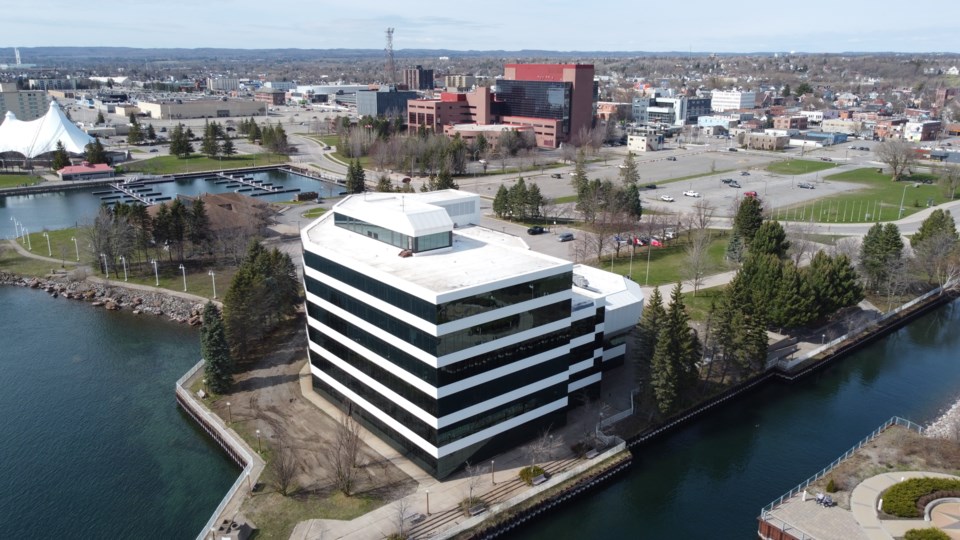For a second straight year, Sault Ste. Marie City Council has been unable to meet its goal of keeping property taxes for single-family residential ratepayers at or less than the city's levy increase.
Last week, councillors were quiet as teenagers sneaking into the family wine cellar as they passed this year's tax ratios.
Their noble objectives weren't met and not a word was uttered about it.
The issue last week wasn't the overall tax levy.
That was set back in December at $123 million.
Tax ratios are the numbers that determine how that overall tax burden is distributed among tax classes including residential, industrial, and commercial.
The city set out to keep the residential class increase down to no more than this year's levy increase of 3.59 per cent.
At the same time, it tried to balance tax distribution to ensure ratios on industrial and commercial properties are less than last year.
All that couldn't happen this year, said Shelley Schell, the city's chief financial officer and treasurer, in a written report to Mayor Provenzano and council members.
The reason, Schell wrote, is that for a second straight year, our assessment growth has been virtually nonexistent.
Assessment growth results from construction or expansion of buildings, of from assessment corrections and revisions.
Assessment growth provides the city with additional tax revenue to provide new services that support the public good.
Over 19 years from 2001 to 2019, Sault Ste. Marie experienced positive assessment growth in every year except 2002, 2004 and 2006.
But 13 years of relentless assessment growth came to a crashing halt in 2019.
That sent our well-intentioned long-term tax policy flying out the window.
"Managing the tax objectives proactively for 2021 was problematic due to virtually zero per cent assessment growth in 2020 resulting in very little new municipal revenue," Schell wrote.
"Staff were unable to provide alternate ratios that would address keeping the residential class increase at or less than the levy increase."
"Proactive decreases to the industrial and commercial classes could not be achieved either without impacting the residential class to a greater extent."
"The objectives are in conflict with each other without assessment growth available so one objective cannot be maintained without impacting the other."
So our button-lipped councillors agreed with Schell that municipal taxes on 92.5 per cent of the residential properties will increase less than $17 per month, with an average change of $9 per month for single family dwellings.
Interestingly, when Schell presented the same numbers last year, she expressed them as yearly hikes.
Schell's analysis didn't make any allowance for education taxes, which the city collects on behalf of the province, or tax capping.
In a separate vote void of discussion, councillors agreed to make maximum use of tax-capping tools on commercial properties, maintaining a minimum cap of five per cent on the industrial class while increasing the current value assessment threshold to $500.
Here are other after-growth tax ratio changes approved by City Council:
- new multi-residential - 4.14 per cent
- multi-residential - 4.14 per cent
- commercial occupied - 2.05 per cent
- commercial excess land - 2.06 per cent
- commercial on-farm business - 2.10 per cent
- shopping occupied - 2.05 per cent
- shopping excess - 0.00 per cent
- office occupied - 2.05 per cent
- office excess land - 0.00 per cent
- parking/vacant land - 2.05 per cent
- industrial occupied - 2.06 per cent
- industrial excess land - 2.06 per cent
- industrial vacant land - 2.05 per cent
- industrial on-farm business - 2.10 per cent
- large industrial occupied - 2.05 per cent
- large industrial excess - 2.05 per cent
- landfills - 0.00 per cent
- pipelines - 4.20 per cent
- farm - 4.19 per cent
- managed forests - 4.19 per cent
- residential - 4.15 per cent
"The province announced in the 2020 budget a new optional small business property subclass," Schell says.
"Although an amendment to the Assessment Act has been passed, the regulation to implement the subclass has not been filed. Once the regulation is available, staff will assess the implications of the new subclass, including long-term tax policy outcomes, and provide options to council for their consideration."
